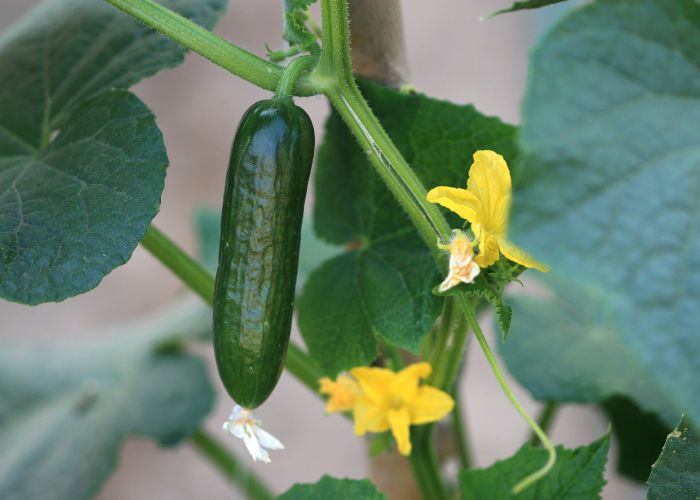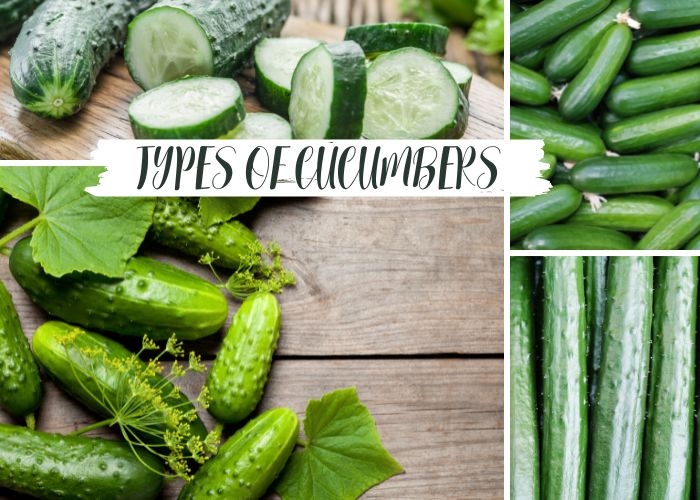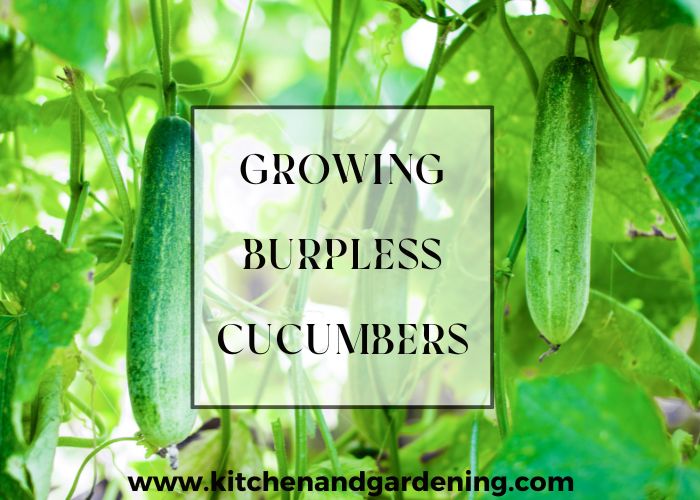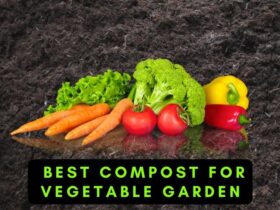How To Grow Burpless Cucumbers
The techniques for growing burpless bush cucumbers are worth learning whether you want to use them for salads or pickles. Burpless Bush cucumber varieties are ideal for gardeners with limited space since they grow bushy rather than vinelike like most cucumber varieties. It is important to keep in mind certain things about burpless bush cucumbers before planting them, regardless of whether you’re new to gardening or haven’t grown them before. To learn more about growing burpless cucumbers and how to harvest them, keep reading.
Burpless cucumbers: what are they?

Now the question is, what is a burpless cucumber? A cucumber that does not burp has been specially grown to contain low levels of cucurbitacin, a compound in cucumber skin and stem that increases burping.
Burpless cucumbers also have a much better flavour than regular cucumbers due to cucurbitacin, which gives them a bitter taste.
Since burpless varieties have fewer seeds, they don’t require peeling or scraping.
Several factors can also influence cucurbitacin content in cucumbers.
The taste of cucumbers grown in hot climates or drought conditions is typically bitter because of the high concentration of cucurbitacin.
Features of Burpless Cucumbers
Depending on the variety, the hybrid burpless cucumber plant is more petite, extended, narrower, sweeter, bitter-free, and seedless. In addition, burpless cucumbers have lower cucumberbitacin levels than traditional cucumbers, so they tend to cause fewer digestive problems. Burpless cucumbers are also effective against tuber scab and yellow virus. Burpless cucumbers mature within 58 to 70 days after planting seeds. Thus if you ask when to pick burpless cucumbers, 58- 60 days is the answer.
Types Burpless Cucumber

Diva Cucumber
As with the Muncher cucumber, this is also a parthenocarpic variety. You can produce the fruit without seeds if it is sterile, meaning it is an unfertilized fruit. A burpless cucumber is defined as a cucumber that is thin-skinned, sweet, and without bitterness, and this cultivar is an heirloom cultivar of burpless cucumber. It is an aesthetically pleasing variety of cucumbers that produces long, straight cucumbers with an attractive appearance.
Muncher Cucumber
Due to their unique characteristics, Muncher burpless cucumbers are highly regarded. In addition, it is a greenhouse-friendly variety of flowers that requires no external pollinators as it produces fruit on its own. Therefore, when it is harvested at about 6 inches or 15cm long, it is ideal for both fresh consumptions as well as pickling.
Heat stress is one of the factors that cause cucumbers to turn bitter, as we mentioned earlier. However, growers have verified from their experience that Muncher cucumbers do not taste bitter even when the temperature exceeds 100 degrees F during the growing season.
Sweet Slicer
Mixed sweet slicer cucumber fruits are sweet, bitter-free, burpless, and glossy dark green in appearance. Despite the cucumber fruit’s smooth, tender skin, you can eat it without peeling as it grows up to 30cm or 12 inches long with a white inside.
Despite difficult growing conditions, cucumber plants mature within 60 to 62 days. To grow this variety to its full potential, you’ll need to use trellising or netting.
Burpee Burpless Beauty
There are various burpless cucumbers on the market. The Burpee burpless beauty is one such cucumber with smooth and thin skin. A variety with the name “beauty” seems to live up to its descriptive name. In addition to having a cucumber that allows it to be sliced, it also has a minimal amount of seeds. Furthermore, it has been praised as being very easy to digest by the maker of the variety, Burpee, who attributes this to its apparent juiciness and ability to be very easy to digest.
As far as appearance is concerned, the fruit has a long and deep green appearance. It produces fruit in 60 days and is disease-resistant.
Tasty Green
The Tasty Green cucumber variety originated in Southern Asia and is relatively seedless and native to Japan and England. A burpless cucumber typically has a mild flavour, tender skin is non-bitter, and has tiny seeds. As with the previous Sweet Slicer variety, this cucumber variety also has burpless characteristics.
You can expect a high level of productivity from these plants. Nevertheless, some trellising will be necessary to produce straight fruit with a pleasing appearance. Within 60 days, the variety can be picked for salads and eaten immediately.
Burpless Bush Cucumbers: How To Grow Them
A variety of cucumbers known as Burpless Bush grows in the form of a compact bush, producing large cucumbers that are perfect for snacking or pickling.
In addition to its hefty yield of long, slender, thin-skinned cucumbers with low levels of bitterness and burping, the cultivar also produces several smaller baby cucumbers.
Its mild flavour makes it perfect for salads and nearly seedless, making it easier on the digestive system.
In the garden, you can direct sow seeds once the soil temperature has reached 60 degrees Fahrenheit after the last frost has passed.
A second option would be to plant the seeds indoors a few weeks before the expected outdoor planting date or begin them indoors up to 3 weeks beforehand.
In some cases, the seeds will be sown with an inch or more of organic matter before it is worked and incorporated. Space cucumber plants 3 feet apart on each hill. Three feet apart are also the spacing between the rows. Throughout the growing season, mulch around your plants to keep them hydrated and fed.
The burpless bush cucumber is quite reliable as far as yield is concerned since it is resistant to downy and powdery mildew.
Nonetheless, it would help if you also closely watched other potential problems.
Young seedlings can easily be damaged or killed by cucumber beetles.
There is also the possibility of burpless cucumbers becoming infested with aphids and contracting bacteria wilt—spacing for air circulation. Additionally, row covers can protect the crop from disease by preventing the foliage from getting wet. Consider the following points while growing burpless cucumbers.
- To grow plants in the garden, it is recommended that seeds are planted in peat pots, pellets or inorganic containers for about three to four weeks before they are transplanted. You should place the seeds in each section two or three at a time. Place the seed pots in a warm, sunny area of your house and water them thoroughly. Please use plastic containers or another kind of container, as you should plant the seeds about half an inch below the soil’s surface. Ensure that the soil is moist and warm before planting seeds once frost has passed.
- Then mix composted organic matter and manure into the ground and farm until it is wet and loose. It is essential to have a garden that drains well and receives plenty of sunlight. Three or four burpless cucumber plants will be supported by each mound of dirt about 3 feet high and 8 inches wide. Planting seedlings about 12 inches apart in rows is also possible.
- In the garden, either plant the burpless cucumber seedlings in rows or hills. Plant three or four dry seeds in an inch-deep hole if you plant them directly into the soil. About once a week, give the seedlings a good soak. In addition to soaking the seeds in water, too much moisture can damage them.
Things To Consider While Planting Burpless Cucumbers
Placement
Depending on their position, cucumbers can be pretty picky. They thrive in warm climates and prefer places with plenty of sunlight. Cucumbers grow best in hotter parts of the world, so if you live in an area with a hot summer, you should provide them with shade and tenderness. Cucumbers can be grown where the air is warm because they can grow in between 30% and 50% shade.
The plants will be protected from the harsh sun by a simple shade covering, which can be temporary or permanent, and reduce the risk of the fruit being scarred by the intense sun. Cucumbers are also vines that need to climb since they are essentially vines. Please ensure they are in a position that gets enough sun and provides them with some support. Supports such as fences and trellises work just fine.
Irrigation
There is no doubt that cucumbers can benefit from drip irrigation and rainwater tanks because they are thirsty! It is almost necessary with cucumbers to install drip irrigation in your produce patch. Using drippers will help you water your plants and keep them healthy. Place them at the top of the soil, under 5cm – 7cm of mulch.
Cucumbers are susceptible to fungal diseases when their foliage is wet, so they do not respond well to other watering methods. However, you don’t want bitter or dry fruit, so don’t let them get too dry. Water cucumbers early in the morning, aiming mainly at the roots and ignoring the foliage if you need to hand water them.
Soil
Taking care of the soil is of utmost importance. Organic matter, especially compost, is essential for growing cucumbers in friable, well-drained soil—stack two cucumbers on each mound about 40cm wide. Drainage is improved as a result. Keep the roots cool by adding straw mulch. This will prevent the soil from drying out, and the fruit won’t contact the ground, preventing fungal disease.
Pests and Diseases
The fungal infection of cucumbers is similar to that of many vines. A trellis or support, drip irrigation, good air circulation, and early morning watering should prevent fungal spores from growing in straw mulch.
Due to a lack of bee activity, it is also tricky for cucumbers to pollinate their flowers. Providing bees with edible and non-edible flowers will encourage them to visit your patch. In addition, pesticides used in the garden are often used to kill both good and bad insects, hopefully reducing their use. If you are concerned, hand-pollinated cucumbers can be pollinated; pick a male flower and lightly touch it to the female flower’s centre stem.
Bottom Line
Considering the overall picture, burpless cucumbers are probably not burpless, but some cultivars can be grown without the bitter taste. It is one of the best choices when choosing a cucumber with a mild, sweet taste, free from the bitterness many people dislike about cucumbers. If you keep these tips in mind, you will be able to have homegrown cucumbers that won’t upset your stomach or cause you to burp excessively. For more gardening guides, follow us!














Leave a Reply